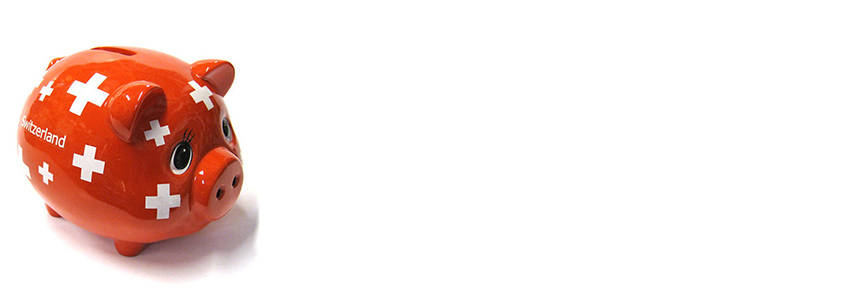2023: a year of transition?
Warning: Undefined array key "HTTP_ACCEPT_LANGUAGE" in /home/clients/4377069e051704696c24b9b773d74d1d/sites/trillium.ch/wp-content/themes/monolit-child/functions.php on line 22
Warning: Undefined array key "HTTP_ACCEPT_LANGUAGE" in /home/clients/4377069e051704696c24b9b773d74d1d/sites/trillium.ch/wp-content/themes/monolit-child/functions.php on line 22
Warning: Undefined array key "HTTP_ACCEPT_LANGUAGE" in /home/clients/4377069e051704696c24b9b773d74d1d/sites/trillium.ch/wp-content/themes/monolit-child/functions.php on line 22
With a year-to-date performance of +6.72% (SPI Index)*, Swiss equities are lagging behind the world’s leading stock markets. As a general rule, the Swiss equity market outperforms the world’s leading stock markets over the long term, not least because of its solid institutional framework, sound governance and efficient capital allocation. Therefore, how can we explain this sudden underperformance?
At the start of 2023, the lack of short-term visibility combined with an unapparent economic slowdown was often cited by business leaders. However, with full order books, managers were planning to meet their financial targets for the year as a whole. We could also detect a certain degree of optimism with the opening up of China and a possible macroeconomic “boost”. What’s more, the generally satisfactory Q1 results, largely included in stock prices, with the large-cap market performing at +5.11% (SMIC Index) and the small- and mid-cap at +10% (SPIEX Index), probably benefited the perception of the economic context.
However, three themes returned with insistence after Q1: destocking, visibility and China.
Swiss companies in the industrial sector confirmed in early June that their customers are continuing to on both the US and European markets, and that new orders are struggling to return. return. This destocking will probably come to an end this summer in the USA, and in autumn in Europe. European continent. The situation is quite different in the fields of energy efficiency, automation and telecommunications automation and telecommunications, which remain buoyant.
In terms of short-term visibility, management does not foresee any improvement in demand before the 1st quarter of 2024 at the earliest. Particular attention will be paid to 2nd quarter 2023 results, as well as the intangible elements that will be communicated.
In the 1st half, China was clearly the disappointment for investors. Demand failed to reach the expected post-COVID level. However, a recovery is expected in the 2nd half, with the Chinese government’s stimulus policy. Even if the country is slowing down, a rapid change could take place in the direction of strong growth.
Against this backdrop, the next few weeks will be tricky, and companies are likely to revise their financial targets downwards. In addition, we are still facing a period of rate hikes by central bankers, both in the US market and in Europe and Switzerland. The latter will define future terminal values, which will continue to generate volatility in securities.
The good news is that Swiss companies will maintain their CAPEX investments and R&D spending at the same level. Indeed, innovation is of crucial importance to Swiss companies. What’s more, the strength of the Swiss franc is offset by the added value of the products sold and the structural pricing power that some companies may have. It should be noted that R&D spending is often above average, giving Swiss companies a significant competitive edge and enabling them to be tomorrow’s winners. Investing in Swiss know-how, means participating in future international growth, while remaining invested in Swiss francs with low inflation.
Belimo, a world leader in energy efficiency, is a perfect example of this. The company benefits from the trend towards energy efficiency and stricter regulations, while contributing to the design of intelligent, environmentally-friendly buildings. Belimo’s leading market position is based on a strong focus on technology and innovation. In Germany, for example, these products performed very well despite rising gas and electricity prices. Germans were more inclined to buy Belimo products than to invest in Geberit supplies.
We continue to maintain our cautious positioning, already in place since mid-August 2022. Companies with structural pricing power, solid margins and good visibility are favored in this uncertain market environment.
*as of June 26, 2023
Warning: Undefined array key "HTTP_ACCEPT_LANGUAGE" in /home/clients/4377069e051704696c24b9b773d74d1d/sites/trillium.ch/wp-content/themes/monolit-child/functions.php on line 22
Warning: Undefined array key "HTTP_ACCEPT_LANGUAGE" in /home/clients/4377069e051704696c24b9b773d74d1d/sites/trillium.ch/wp-content/themes/monolit-child/functions.php on line 22
Warning: Undefined array key "HTTP_ACCEPT_LANGUAGE" in /home/clients/4377069e051704696c24b9b773d74d1d/sites/trillium.ch/wp-content/themes/monolit-child/functions.php on line 22
Warning: Undefined array key "HTTP_ACCEPT_LANGUAGE" in /home/clients/4377069e051704696c24b9b773d74d1d/sites/trillium.ch/wp-content/themes/monolit-child/functions.php on line 22






